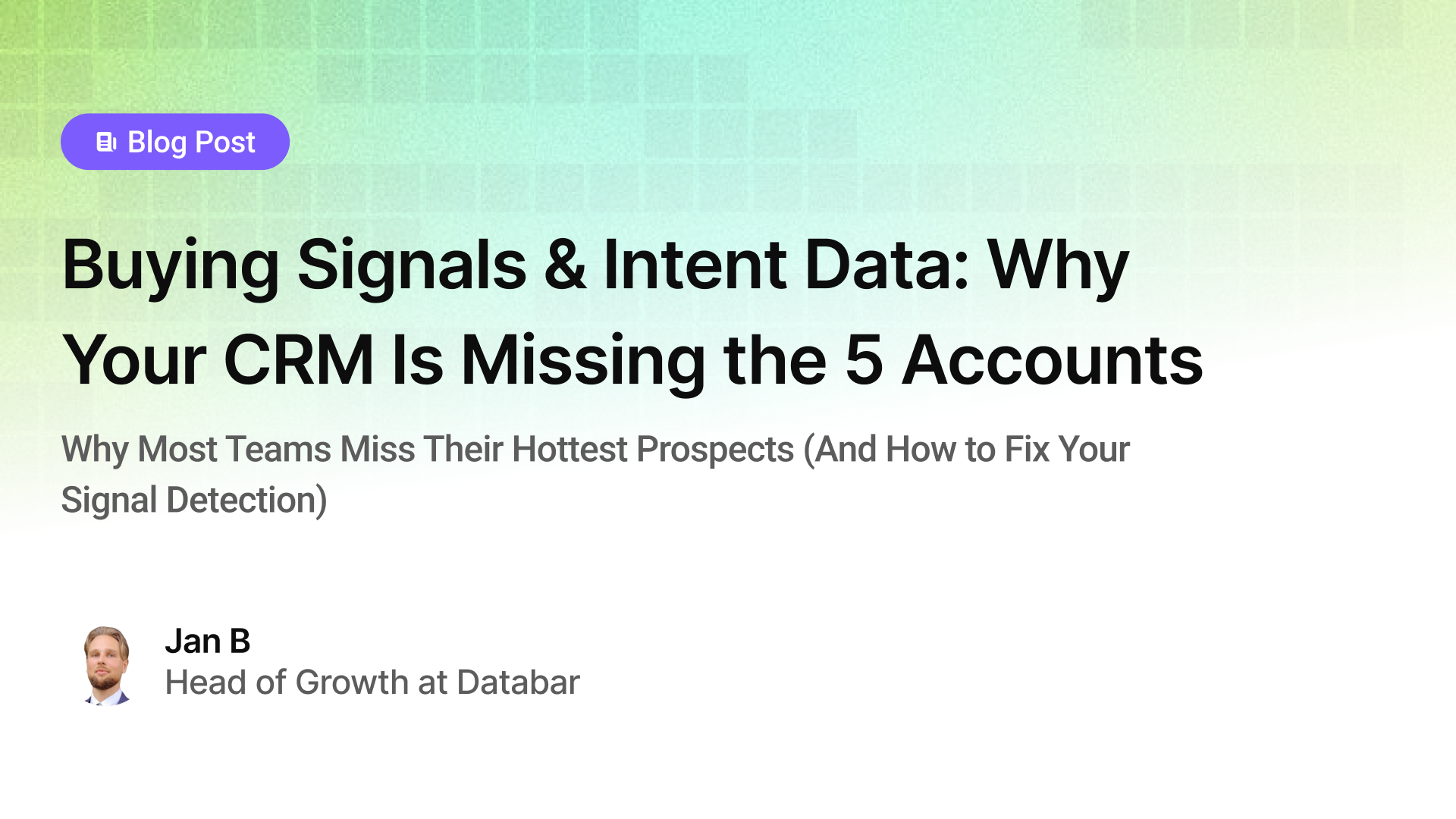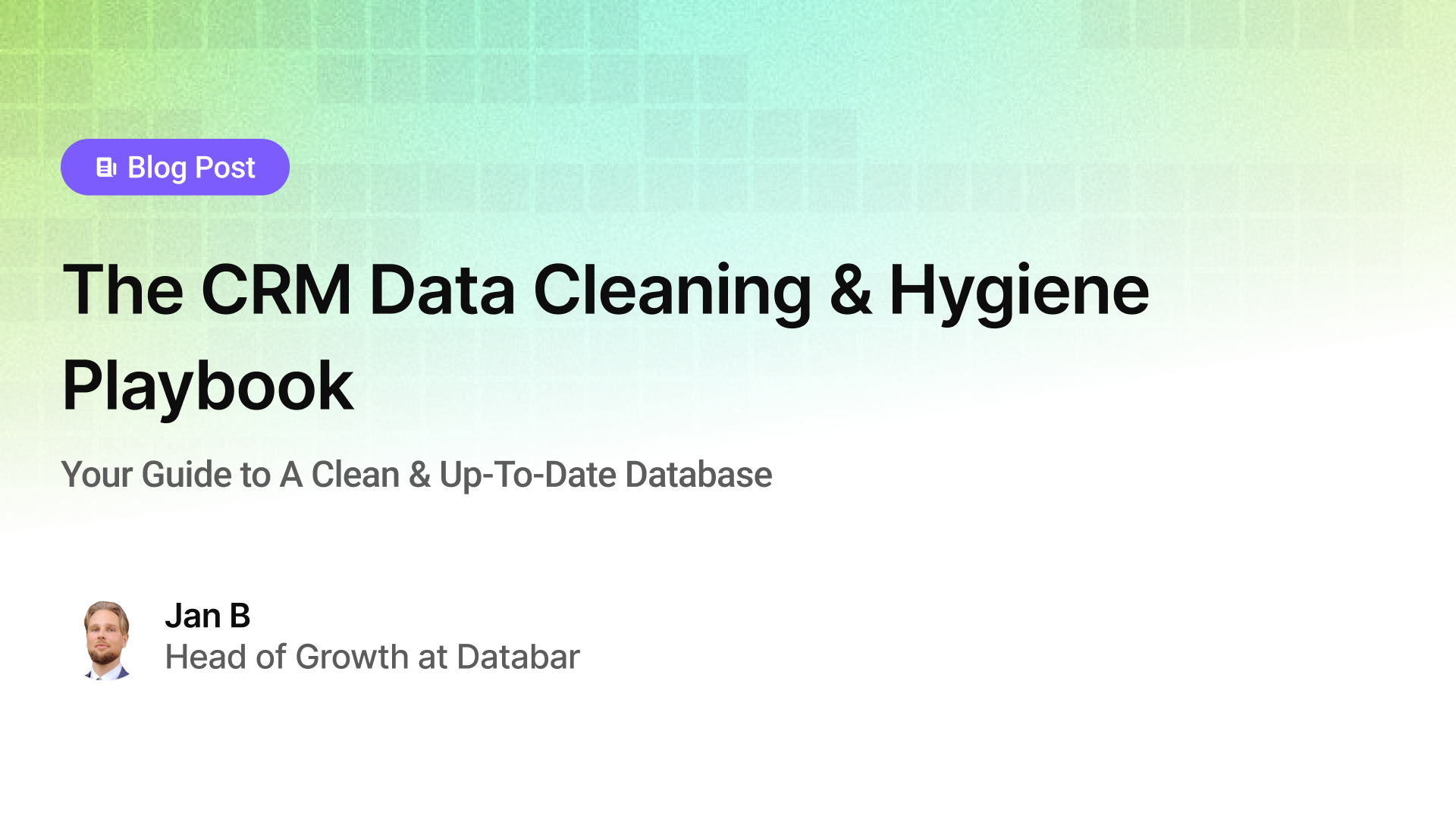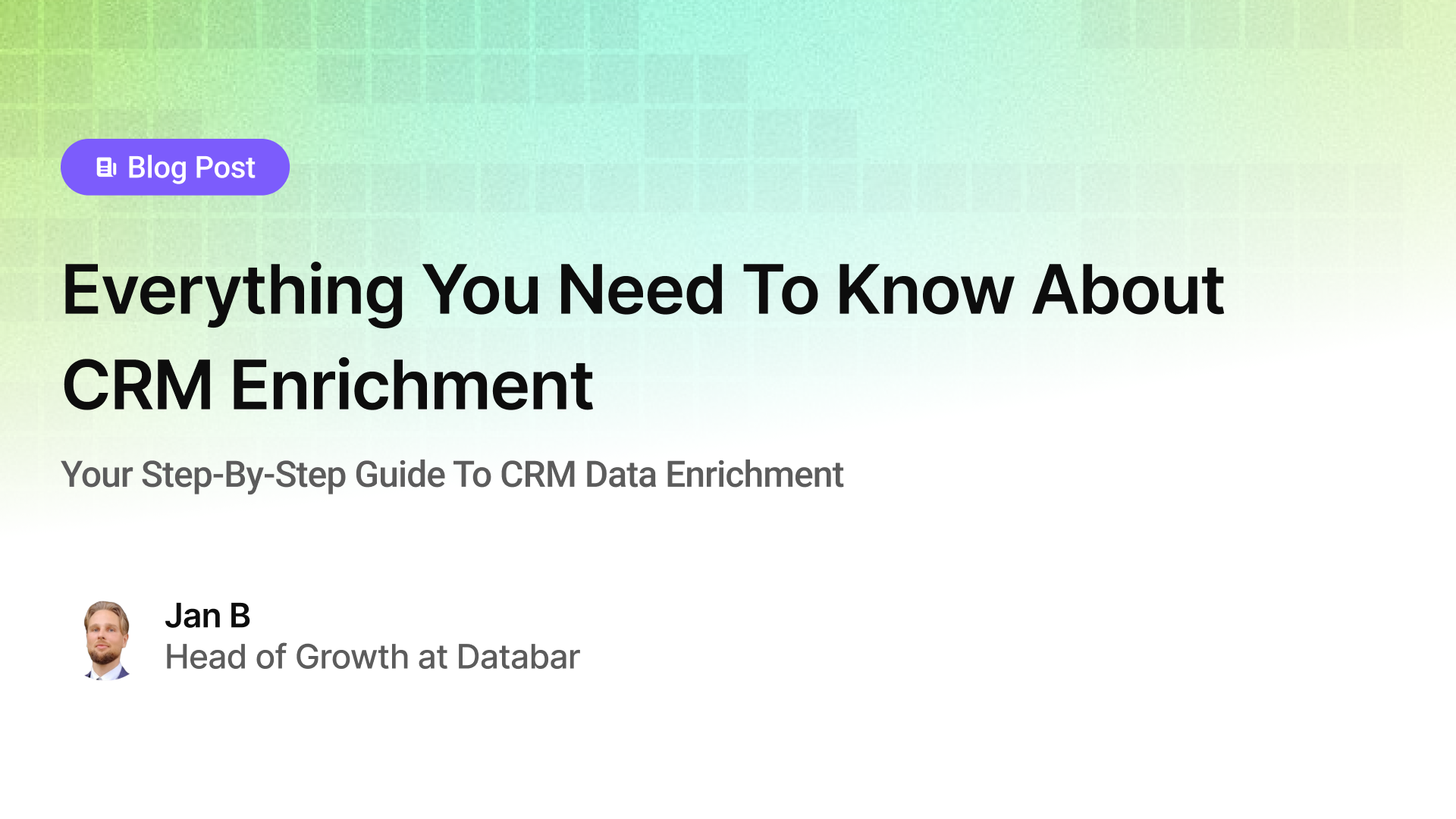Building Hyper-Targeted Account Lists in 2025
Optimizing Your Outreach with Tailored Lists
Blogby JanMarch 31, 2025

If you're still building your target account lists manually in 2025, you're throwing money away. I learned this lesson the hard way after wasting countless hours on poorly targeted outreach campaigns that yielded abysmal results.
The truth? The quality of your list determines the success of your entire outreach campaigns. Without laser-focused targeting, even the most brilliant campaigns will fail. But with the right data enrichment and workflow automation tools, you can create account lists so targeted that your conversion rates will make your competitors weep.
Let me show you how to build targeted account lists that will improve your outreach effectiveness using modern data enrichment platforms like Databar.ai.
Why Most Account Lists Fail (And How to Fix Them)
The biggest obstacle to effective account-based targeting isn't a lack of data—it's data fragmentation and qualification inefficiency.
According to a recent Gartner study, sales professionals spend only 28% of their week actually selling, with the rest consumed by administrative tasks like list building and data management. That's nearly 30 hours per month wasted on tasks that should be automated.
Here's what typically goes wrong:
The Three Fatal Flaws of Traditional List Building
- Scattered Data Sources: Your team jumps between LinkedIn, ZoomInfo, Apollo, and a dozen other tools, creating data silos and inconsistencies.
- Manual Enrichment: Your SDRs spend hours researching companies instead of having conversations with prospects.
- One-Size-Fits-All Targeting: You use broad industry classifications that don't account for the nuanced criteria that actually determine whether a company is a good fit.
"What used to take hours now takes minutes," says David, co-founder of Pryzma. "By leveraging Databar.ai's platform, we've transformed their lead generation from a complex, multi-tool process into a single, efficient workflow that eliminated the need for two full-time positions."
Automated Enrichment Workflow
Let's get into the how-to part. I'll walk you through three real-world examples of building hyper-targeted account lists using data enrichment automation that you can implement today.
Example 1: Finding SaaS Companies with Specific Team Structures
If you're targeting SaaS companies with dedicated customer success teams, here's how to build that list:
- Import initial SaaS company list: Pull from your base data provider.
- Verify SaaS classification: Use the AI agent to confirm they offer subscription software (not just any technology).
- Identify team composition: Use role-based enrichment to find:
- Number of Customer Success Managers
- Presence of a VP/Head of Customer Success
- Customer Success tech stack
- Layer revenue and growth data: Prioritize companies within your ideal customer profile range.
The specificity here is what matters. Instead of "SaaS companies," you're targeting "B2B SaaS companies with 3+ CSMs, a Director of Customer Success, and ARR between $5-20M."
Example 2: Identifying Startups in Need of Project Management Solutions
Let's say you sell project management software to growing startups. Here's how to build that precise list:
- Begin with startup ecosystem data: Gather a preliminary list of startups from funding databases, accelerator programs, and tech hubs.
- Add multi-source growth indicators: Use an enrichment platform to analyze multiple data sources for growth indicators.
Filter your startup list based on these critical growth signals:
- Recent funding (Series A or B within last 18 months)
- Team expansion rate (15%+ headcount growth quarterly)
- Product development velocity (frequent product updates)
- Apply AI agent for organizational analysis: Use AI to scan company career pages, founder interviews, and social media for mentions of "team coordination" - clear indicators they need better project management.
Example 3: Identifying E-commerce Businesses Ready for Fulfillment Software
For this example, let's assume you sell fulfillment software to online retailers handling their own shipping.
- Import or build database: Start with a broad list of e-commerce companies.
- Enrich with operational data: Use data enrichment to identify:
- Order volume (e.g. extracted from revenue)
- Current fulfillment setup (using technology stack data)
- Shipping mentions on their website (using AI analysis)
- Apply intent signals: Layer on data showing:
- Recent logistics job postings
- Engagement with related content
- Score and segment: Create a weighted scoring system based on these factors to prioritize accounts.
How to Implement Automated Account List Building Today
Ready to implement this approach? Here's a step-by-step guide:
Step 1: Centralize Your Data Enrichment
The first critical move is to stop the tool hopping. Platforms like Databar.ai allow you to access data from 100+ providers through a single interface, eliminating the need to juggle multiple subscriptions and login credentials.
Step 2: Create Custom Enrichment Workflows
The magic happens when you build workflows that automatically process and refine your account lists based on your specific criteria.
For example, a workflow might look like:
- Import company names and websites
- Enrich with company data (employee count, funding, etc.)
- Analyze website content for specific signals
- Check for specific technology usage
- Verify social media presence and activity
- Score and rank based on custom criteria
Step 3: Integrate with Your Outreach Automation
Once your list is built and scored, connect it directly to your outreach automation tools. This ensures that as your account list is refined, your campaigns automatically adjust.
Data enrichment is about having the right information, organized in a way that drives action. By centralizing your data sources, automating your enrichment processes, and creating custom qualification workflows, you'll build account lists that deliver consistently higher conversion rates. Your list makes or breaks your outbound.
Try Databar for free today - Improve your campaigns, without hiring more SDRs.
Related articles

Buying Signals & Intent Data: Why Your CRM Is Missing the 5 Accounts
Why Most Teams Miss Their Hottest Prospects (And How to Fix Your Signal Detection)
by Jan, October 06, 2025

Lead Scoring & Account Segmentation: Why Most CRMs Get This Backward (And How to Fix It)
How to build a system that tells your team who to call, when, and why
by Jan, October 06, 2025

The CRM Data Cleaning & Hygiene Playbook
Your Guide to A Clean & Up-To-Date Database
by Jan, October 04, 2025

Everything You Need To Know About CRM Enrichment
Your Step-By-Step Guide To CRM Data Enrichment
by Jan, October 03, 2025